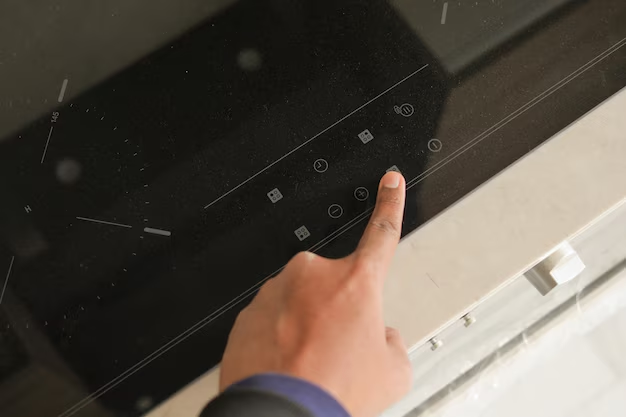Achieving Perfect Balance: A Guide to Leveling Your GE Bottom Freezer Refrigerator
Is your refrigerator leaning to one side, rattling during use, or causing uneven cooling? Ensuring that your GE bottom freezer refrigerator is perfectly level is crucial for optimal performance and longevity. A well-leveled fridge can prevent leaks, reduce noise, and enhance energy efficiency. In this guide, we will walk you through the step-by-step process of leveling your refrigerator, while offering tips and insights into maintaining balance within your kitchen space.
Understanding Why Your Refrigerator Needs to be Level
Before diving into the "how," let's tackle the "why." Making sure your refrigerator is level involves more than just a visual straightening. A level refrigerator:
- Prevents Doors from Swinging Open or Shut: An uneven footing can cause doors to swing open or not close tightly, affecting cooling efficiency.
- Reduces Noise: Vibrations and rattling can occur if the unit is not stable, translating into unwanted noise during operation.
- Enhances Cooling Efficiency: Uneven leveling can strain the motor and other components, leading to poor temperature regulation.
- Prevents Ice Maker and Water Dispenser Issues: For models with these features, unevenness can result in improper water flow.
These issues illustrate why it's essential to ensure proper leveling for not just operational efficiency but for overall kitchen harmony.
Tools You Will Need
Before beginning the process, gather the necessary tools. Having them on hand will make the task smoother and more efficient.
- Carpenter’s Level: A must-have to ensure precision in leveling.
- Adjustable Wrench: Useful for adjusting leveling legs.
- Measuring Tape: Helps to ensure the refrigerator is equidistant from walls or cabinets.
- Shims or Wedges: These may be needed if your kitchen floor is uneven.
Step-by-Step Guide to Leveling Your GE Bottom Freezer Refrigerator
Position the Refrigerator
- Identify the Ideal Location: Ensure the location is near an electrical outlet and has a water line accessible, if applicable. The surface should be flat and stable.
- Measure Clearance: Using your measuring tape, confirm that there is adequate space around the sides and top of the fridge for ventilation, typically at least an inch clearance is recommended.
Adjust the Leveling Legs
- Locate the Leveling Legs: These are usually found at the front bottom corners of the refrigerator.
- Check Current Level: Place the carpenter’s level on the top of the fridge, first from side to side and then front to back.
- Adjust Accordingly: If the fridge leans to one side, turn the leveling legs with an adjustable wrench. Generally, turning the legs clockwise will raise that side, while counterclockwise will lower it.
- Recheck with Level: Always recheck the fridge’s balance after each adjustment to ensure precision.
Verify Door Alignment
- Inspect Door Closure: Check if doors align properly and seal effectively without gaps.
- Re-Level If Needed: Sometimes adjusting the legs further can help align doors perfectly.
- Check Interior Leveling: Ensure that shelves and drawers inside are aligned and functional.
Tackle Uneven Floors
Not all kitchens are created equal, and some may have slightly uneven floors.
- Use Shims or Wedges: Position them under the legs on the lower side of the floor.
- Reassess with Carpenter’s Level: Ensure the fridge remains evenly balanced.
Maintaining Your Refrigerator's Balance
Once your fridge is level, maintaining it is crucial to ensuring your appliance's longevity.
Regular Checks
- Quarterly Level Checks: Seasonal changes and regular use might unlevel your fridge slightly. Regularly recheck and adjust as needed.
- Door Seal Inspection: Verify that doors seal tightly to avoid cooling loss.
Kitchen Harmony Tips
- Floor Maintenance: Ensure the kitchen floor remains stable and clean to prevent shifting.
- Integrated Appliance Routine: Align all kitchen appliances evenly for a cohesive look and optimal function.
Common Challenges and Solutions
Noisy Operation
Challenge: Persistent noise despite being level.
Solution: Check if the noise comes from internal components like shelves or other kitchen noise sources.
Persistent Door Misalignment
Challenge: Difficulty in aligning doors even after leveling.
Solution: Inspect the hinge mechanisms and hardware for wear or damage, and adjust or replace components if necessary.
Summary of Key Steps and Tips
Below is a succinct breakdown of steps and tips to keep your refrigerator perfectly balanced and efficient in performance.
- 📏 Tools Needed: Carpenter’s level, adjustable wrench, measuring tape, shims.
- 🔄 Steps to Level:
- Position effectively with adequate clearance.
- Adjust legs using a wrench and verify with a level.
- Align and check door functionality.
- Counteract uneven floors with shims.
- 🛠 Maintenance Tips:
- Schedule regular leveling checks.
- Maintain kitchen floor integrity.
- Integrate proper appliance placement.
Leveling your GE bottom freezer refrigerator need not be a daunting task. By following these straightforward steps and considering additional maintenance insights, you can achieve a level refrigerator that performs efficiently and serves your kitchen well.
Revisiting and maintaining proper leveling practices ensures that your refrigerator remains a silent, effective partner in your culinary adventures. With just a little attention to detail and regular checks, your GE refrigerator will continue to deliver optimum performance and energy efficiency. Happy balancing! 🌟
